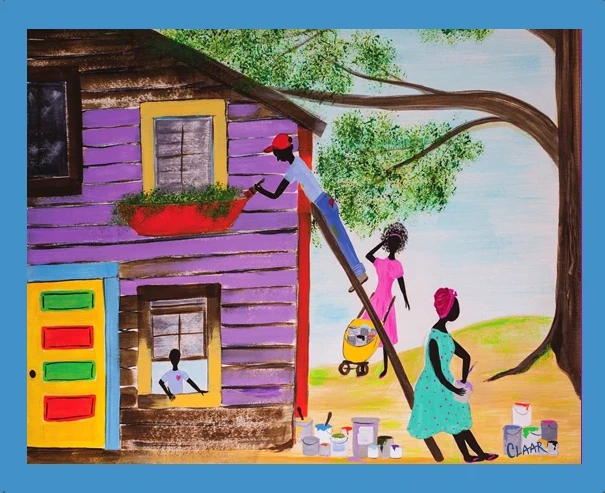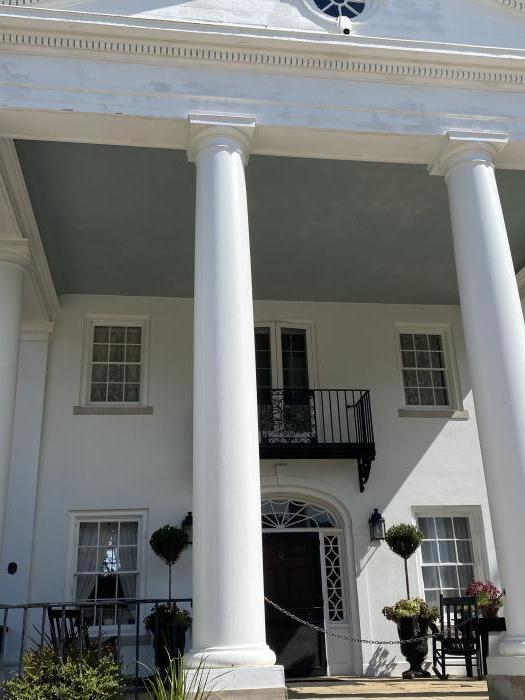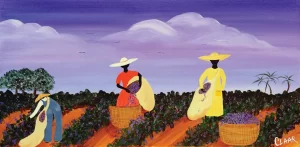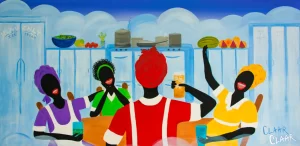
Haint Blue: Unveiling the Mystery Behind Blue Porch Ceilings in the Low Country
Greetings, fellow history enthusiasts! Today, we embark on an enthralling journey to unveil the story behind a unique Southern tradition. It involves the application of Haint Blue paint on door frames, window sills, and porch ceilings of homes in the Low Country. So, fasten your seatbelts because we are about to delve into a world where folklore, history, and practicality intersect in a mesmerizing way.
This captivating exploration takes you on a journey through the cultural tapestry of the Gullah-Geechee people, an intricate community with deep-rooted connections to the Low Country regions of the southeastern United States. At the heart of this narrative lies the enigmatic tradition of painting porch ceilings a shade known as “Haint Blue”. Follow along with me, and uncover the rich history, folklore, and significance that this seemingly simple pigment holds within the Gullah-Geechee heritage. Join us as we peel back the layers of time. We are revealing the stories and beliefs that have transformed porch ceilings into a canvas of protection, spirituality, and profound cultural identity.

Unveiling “Haint” in Gullah-Geechee Tradition
Let’s begin by demystifying the term “haint.” In Gullah-Geechee culture, a “haint” represents a restless or mischievous spirit. It is a ghostly presence that might linger and cause trouble. Imagine a world where beliefs in the spiritual realm interweave with daily life – this was the reality for the Gullah-Geechee people.
Warding off the Unseen
Why the choice of cloudy blue for windowsills and porch ceilings? The Gullah-Geechee people have a rich tradition steeped in superstitions and folklore that influenced their choices. Among these choices is the selection of the pale blue shade known as Haint Blue. According to their belief, spirits and haints cannot cross water. To address this, they painted porch ceilings and various entry points with this soothing blue. The goal was to trick the restless spirits into perceiving the ceiling as water, preventing them from entering the home. It’s a practical solution with a touch of enchantment, and that’s the magic of Haint Blue.
A Symbol of Tradition
As you wander through Low Country communities and gaze upward at those blue porch ceilings, remember you’re not merely observing paint. You’re witnessing a living testament to the deep-rooted beliefs of a culture. These ceilings are more than a decorative choice. They are a connection to the past, a silent conversation between the visible and the unseen.

Preserving a Cultural Legacy
In a world where traditions sometimes fade in the face of modernity, the Gullah people persistently honor their customs with pride. Numerous organizations and community efforts are dedicated to safeguarding the stories, beliefs, and practices that make their culture unique.
The next time you find yourself admiring the tranquil blue of a southern porch ceiling, take a moment to appreciate the layers of history. The mystical belief lovingly brushed onto that surface. It’s a vivid reminder that our homes are not just physical spaces; they are vessels that hold the echoes of generations.
The Narrative Behind Each Brushstroke
Concluding our journey into the world of Haint Blue and Gullah-Geechee traditions, remember that each brushstroke of color carries a unique story. The soothing blue on those porch ceilings represents more than a paint choice. It’s a testament to a culture’s rich tapestry of beliefs, superstitions, and practical ingenuity.
So, keep your eyes open for those enchanting blue porch ceilings. While you admire the color, reflect on the spirits and stories they’ve been painted to protect against. It’s a reminder that the past is always present, sometimes painted right above your heads.
Out Featured image can be purchased at: https://gullahliving.com/shop/prints/mama-picks-the-colors/
For Further Reading on Indigo Farms
https://agriculture.sc.gov/roadside-markets/indigo-farms/
https://www.nationalgeographic.com/travel/article/south-carolina-indigo-artists-enslaved-plantations

